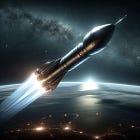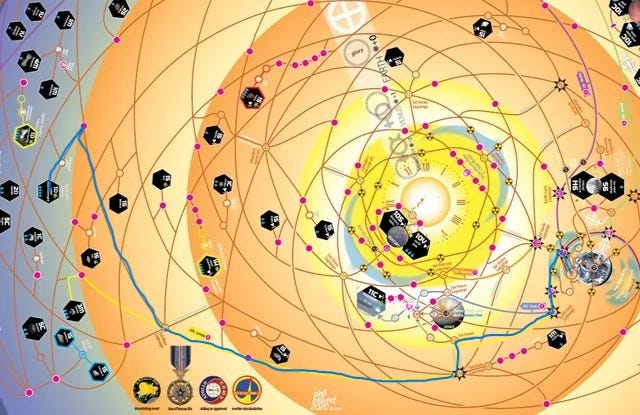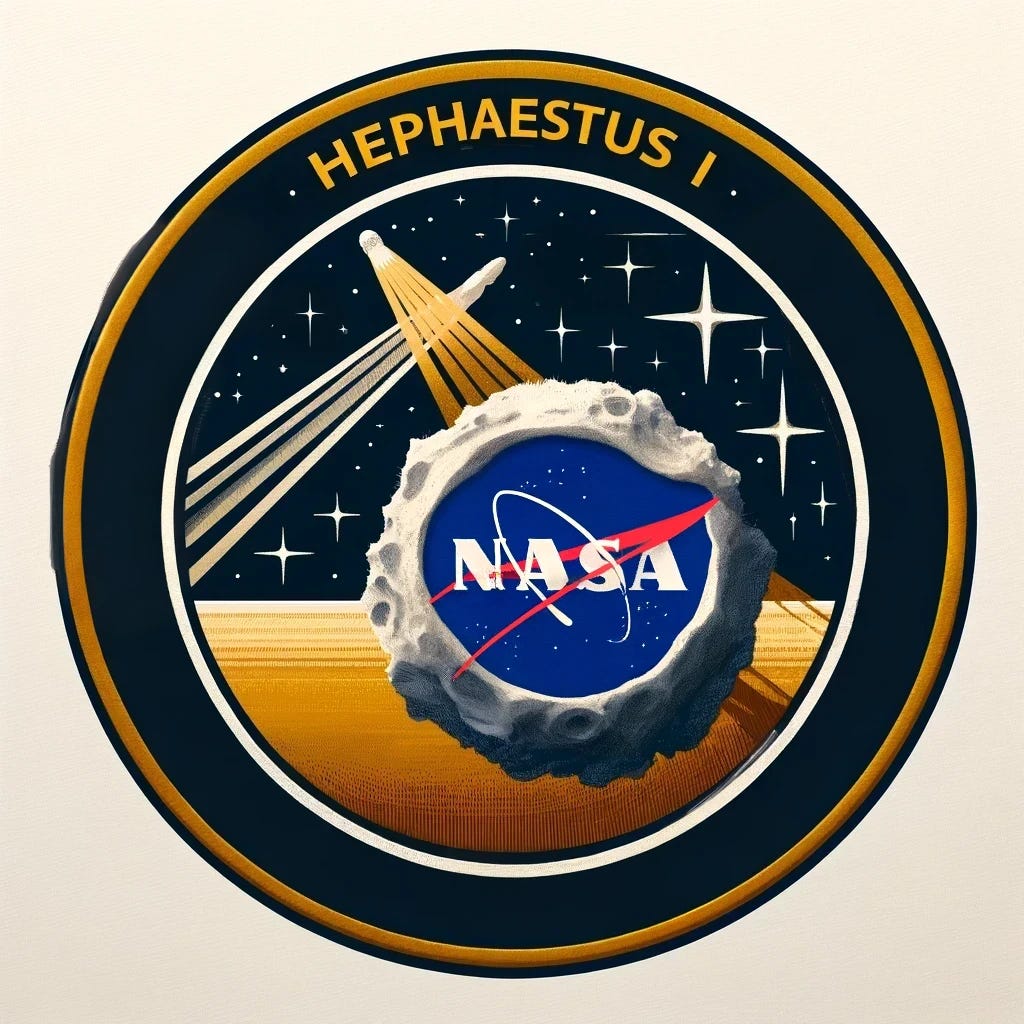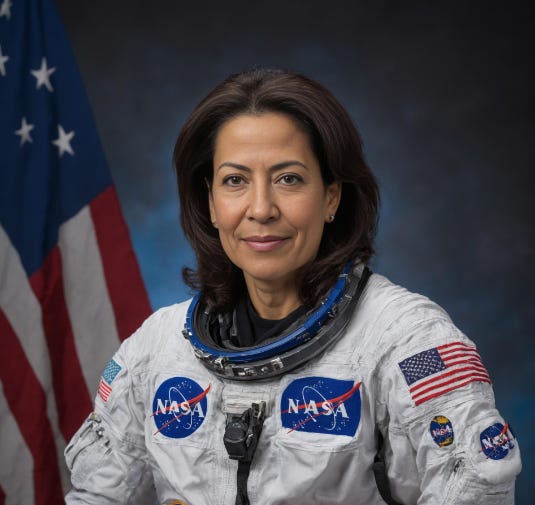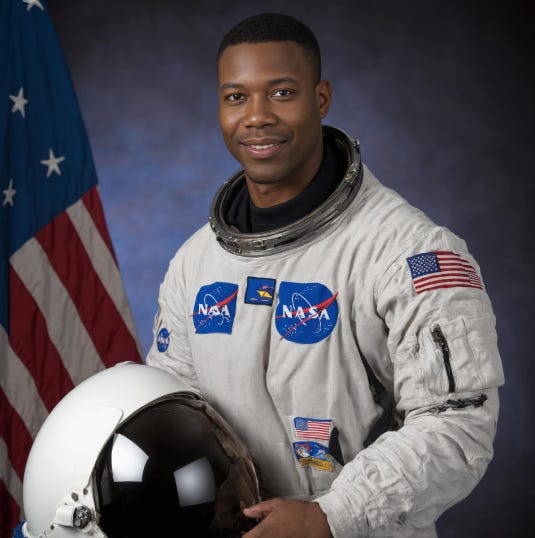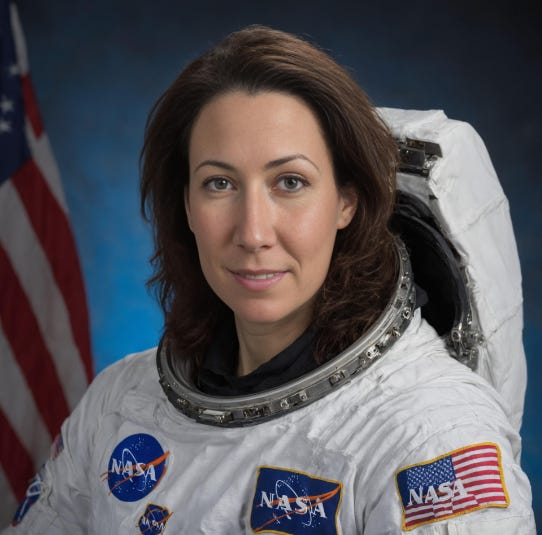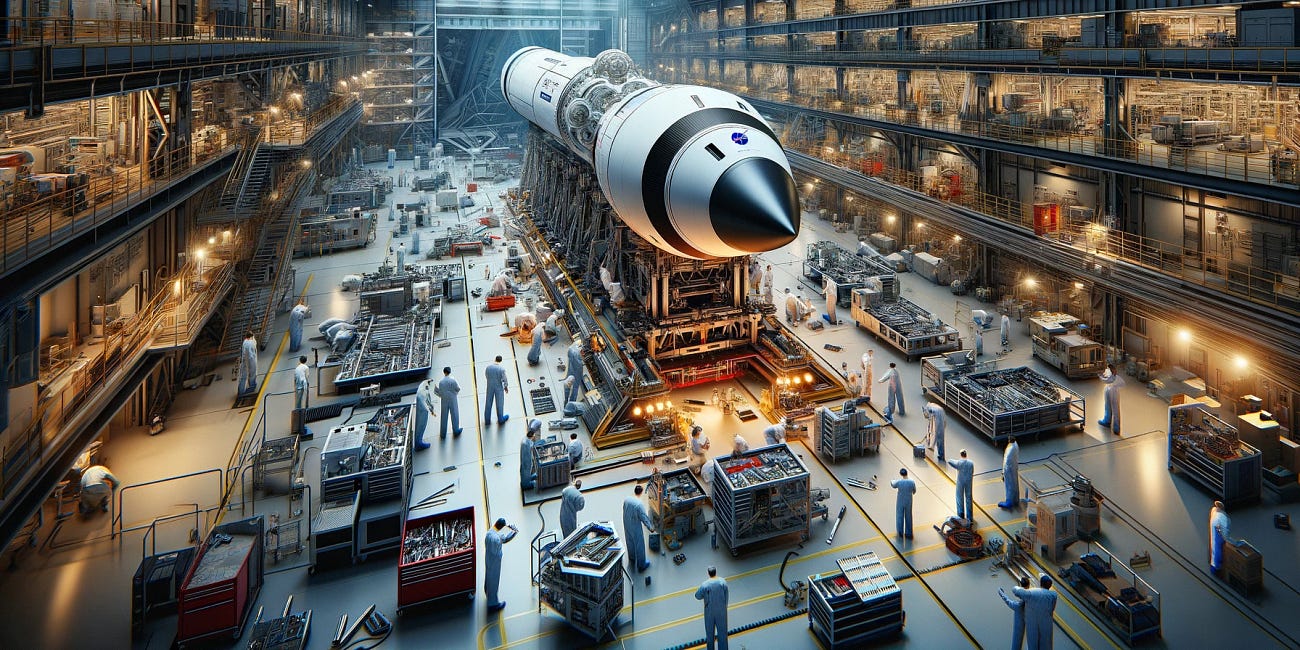Hephaestus I Mission: Setup
Another solitaire game of 60 Years in Space
I have been very busy recently, so I haven’t been able to make much of any progress on my worldbuilding project. What game time I have had, I’ve been playing 60 Years in Space, an incredibly crunchy science-fiction/space exploration game. I played through an intro mission and related it in an earlier post.
This is my second game. As before, I post the writing that I did as I played through, so there are points where I made rules mistakes or didn’t fully think through stuff, and I’ll use footnotes to annotate that. The game’s designer, Andrew Doull, has just released a version 2 of the rules, so there are several things that are out of date. I also have done some personal reinterpretation of the rules in addition to some misinterpretation, so there’s no guarantee that anything here is according to the rules as written. Where I made a rules mistake, I tried to note it in a footnote, but I’m sure I didn’t catch all of them.
As I mentioned in the previous post on the game, 60 Years in Space is an incredibly ambitious game that suffers from a number of flaws but whose ambitions and concepts outweigh the flaws. I’ve greatly enjoyed playing it, and have been fairly obsessed by it over the last month or so.
In any case, here goes:
Setup
This time I'm going to start in the ‘Baseline’ era – basically the modern era. I'll start in 2030, just after the Artemis V mission successfully lands the 3rd crewed mission on Mars. NASA decides to continue their space program with additional crewed missions with new technology, hopefully establishing new ISRU (In-Situ Resource Utilization) and permanent facilities in space.
As I'll be in the Baseline Era to start (against the recommendation of the rulebook)1, any factions and encounters will mostly be other major space programs, until the Upported era (infrastructure in space allows for more long-term space missions and exploitation) starts. The rulebook says that a new era should start every 15 years. It seems weird to have the eras just automatically advance based on time rather than the state of the game, and, as the rulebook admits, 15 years seems a bit quick for the amount of technological advances occurring in this period. For now, though, I’ll stick with 15 years per era, but I may decide to extend that if it makes sense in game.
A few house rules I'm going to make right off the bat – first, bumps (free change to one die by one point) will come every in-game year rather than every out-of-game hour, and I’ll only get one character’s amount, rather than all of them. Second, I'll generate names, probably using an on-line random name generator, rather than using call-signs to refer to everyone2. 3rd, the Research Operation will only research one technology, not 1D63.
I will start out with 2 random thrusters, generators and radiators already researched. Everything past that I'll have to roll for.
Space Politics
We'll start by generating the Space Politics. This is basically a description of how the different space programs relate to each other in space. I roll 2d6: 5+4 = 9 - Egalitarian (Green).
Space exploration is seen as an endeavor for the good of all mankind, not just those privileged enough to be able to afford a space program. Crew members are recruited to maximize diversity and allow all national groups to feel like they are making a positive contribution, regardless of the merits of the individual crew member. If the space politics is Egalitarian, then any income operations you perform will tax the highest Capital ability crew member(s).
It's not what I would have picked, probably, but it'll work fine. It partially fits with the modern politics of the space program, in any case.
Mission Control
Next, I'll generate my Mission Control Social Unit (MCSU). The rules say that on the first play through, I should pick a National Space Agency. I want to play as a NASA crew, so that makes sense in any case. They have a BSU color of White (conservative/nationalistic), a spacecraft quality of Medium, a Crew Quality of High (30), a starting mission of ‘Science,’ and a Contact Age of 36 +3D6.
Rather than roll to see what kind of National Space Agency it is, I'll just pick “Public-Private Partnership” to represent NASA's current status, partnering with SpaceX and other organizations for space exploration. The next step should be to roll for what spaceport the Mission Control and Launch Center are based out of. Rather than rolling on the table, I'll just pick Kennedy Space Center in Cape Canaveral Florida, the primary NASA launch site.
Crew Module
Next, I roll for my crew module. I'll roll 1d6 on the following table:
1d6 = 5 - A 6 thrust, 8 fuel consumption, and 2 consumption after-burner, crew module with a Missile and Raygun ISRU 4 platform.
What does that mean? Basically, the crew module can land on a body of size 6 or smaller (Luna is size 9 by comparison), can conduct 6 burns in a turn, and costs 8 steps of fuel for every burn. It can burn 2 additional fuel to increase the thrust to 7, as well. It has a Missile prospector which can prospect bodies by using its thrusters to melt the ground of the body with thrusters while landed there, and a raygun prospector which can prospect bodies by using an energy beam to check spectral signatures from orbit. The ISRU 4 means it can only prospect on bodies with at least 4 water, which includes 2 of the three sites on Mars, a few asteroids that aren't too far away, and not too much else. In other words, to really start prospecting, I'll need a better ISRU rating from a robonaut.
I also roll 1d6 for a secondary platform, -1 for having a raygun :1d6 - 1 = 3 - 1 = 2 – Beamed Power Platform. I can use the raygun on the module to beam 4kW of power to a receiver somewhere.
Starting Factions
Now, I roll for starting factions. I roll 1d6 for each BSU color other than my mission controls (i.e., red, green, purple and orange). I'll create a faction if I roll a 1 on that roll, which has another First Wave Crew trying to reach space.
Red: 1d6 = 6
Green: 1d6 = 2
Purple: 1d6 = 6
Orange: 1d6 = 6
So, no other starting factions. However, as I go through the game, I'll generate other factions that will compete with me on the race to the stars.
Starting Mission
Next, I'll generate a starting mission. Basically, what is NASA sending my crew to try to do? Whatever it is will determine what I want to research and what my mission plan is. I roll 1d6 = 1 - so it's a “Glory” mission. Basically, trying to go somewhere in space for the sake of doing so, just like the Artemis missions. I have to reach my destination, then return back to Low Earth Orbit (LEO), to complete the mission.
Destination: 1d6 = 4
Comet Wilson-Harrington
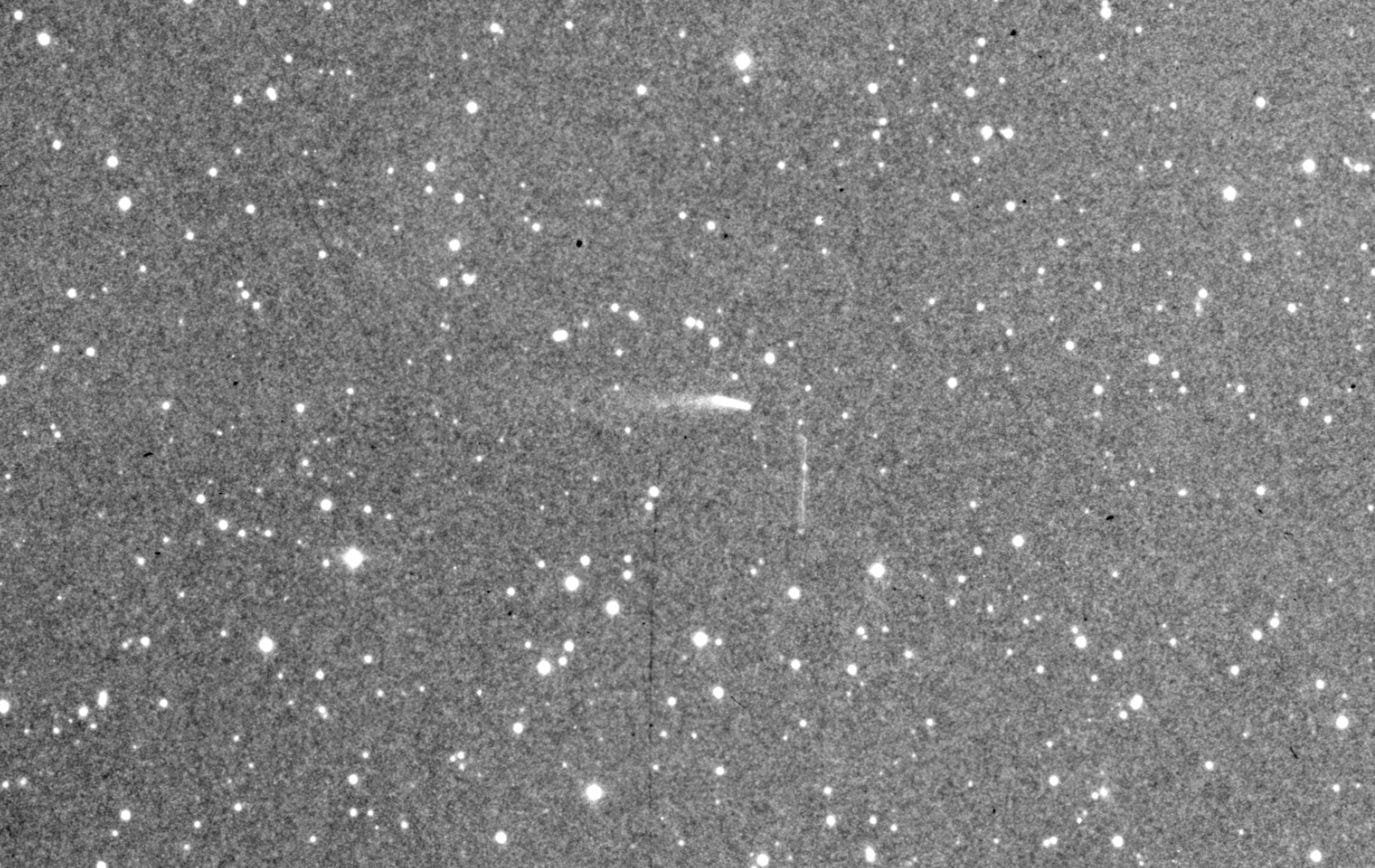
Wilson-Harrington is a comet in the Ceres heliocentric zone. I can get there either by doing a Luna flyby, or by going the opposite direction, changing course at the Sol-Venus L2, then continuing there.
The first option takes 7 burns, including two Hohmann maneuvers. Plus, I have to return, which takes the same amount.
The second option takes only 4 burns, so it's definitely the better course. (I almost screwed that up, not realizing that I could change course at the Sol-Mars L3 to circumvent the need for a Hohmann maneuver to get into the comet's orbit.
8 burns total (4 burns there, 4 back). I can do ISRU refueling on the comet if necessary, so I may not need enough fuel to get there and back, but that will add an extra year to the total mission time if I do that. When I design my first rocket, I'll decide if that's necessary.
I'll call the mission the “Hephaestus I” mission, to keep with the tradition of naming missions after Greek gods and based on the idea that it's a first mission to establish the feasibility of settlement and travel of far-flung space.
Depending on what equipment I have available, I'll decide if I can try to establish a factory there as well. The problem would be if I prospect the comet and there's nothing there worth mining, in which case bringing along the factory equipment will just be unneeded mass. I'll decide that later, though.
Generate Crew
Now, it's time to generate my crew. I'll generate a 4-member crew – a Pilot, Mission Specialist and two Payload Specialists.
I also need to ensure that I have good skills in the core competencies – Pilot, Prospect, Industry, Teleops and Mining.
I included pictures I generated of the ‘official Astronaut photo’ of the astronauts using Stable Diffusion at the end of their generation section.4
Pilot
We'll start with the pilot (also mission commander).
First, demographics:
Gender: 2d6: 5+5 = 10 - Female
Ancestry I'll roll 2d6, and if the total is less than 3 I'll roll in the overall crew nationalities table. Otherwise, I'll go to the demographics table and roll for the United States. 2d6: 2+5 = 7 - so I roll on the United States column
Ancestry: 2d6: 4+1 = 5 - Mexican.
Language: 1d6 = 6 - per the table that should mean she can speak Spanish but not English. However, per the rules all crew also speak English, so she speaks English and Spanish. Though the rules don't specifically state, it makes sense that any mission control contacts will also speak English.
Name: There aren't rules in the rulebook for generating names, since they're supposed to go by call-signs. However, I didn't like the call-signs at all, so I decided to make my own rules for names.
I'll start with rules for the United States, since that's where my crew is from, and where the most complexity would likely exist anyway. I'll roll a 1d6, on a 1 or 2 I'll generate the first name using a “American name” generator, on a 3-6 I'll use a name generator for the ethnicity. For last name, I'll roll again, on a 1 I'll do ‘American,’ on a 2-6 I'll go by the ethnicity.
So, 1d6 = 2 - an American first name
1d6 = 2 - a Mexican last name.
Surprisingly, most of the random name generators I found online weren't giving me good options – they were mostly really rare and weird names. However, I eventually found one that worked pretty well and got the first name Sandra and last name Romero
Name: Sandra Romero
Next, I'll pick an archetype. As the Pilot/Commander of the mission, she can pick either ‘Comeback Astronaut’ or ‘Test Pilot’ as an archetype. Either one makes perfect sense – either she's a astronaut from one of the Artemis missions or a mission to the ISS, or she's a Airforce or Navy test pilot (probably Navy, since Go Navy!). I'll roll between the two – 1d2 = 2 - she was a Navy Test Pilot prior to being selected for the astronaut program. She was recruited by the astronaut program to test (1d6 = 3) a new space plane, then recruited to the Hephaestus I mission.
Age: 37 +1d6 = 5 - 42 years old
Skills and Abilities: I can choose to roll for or buy skills and abilities. However, I'll just go with the numbers listed on the archetype page. I do get an additional 6 skill points to spend, but I'll wait until I generate the rest of the crew before I spend those.
Physical: 5
Mental: 5
Social: 4
Capital: 4
Primary Skills: Pilot (6), Devops (5), Engineer (5)
Secondary Skills: Teleops (4), Industry (4), Research (4)
Service History: I'm supposed to roll twice, the first being the service history known to the entire crew, the second being a hidden one that only the player of this character knows. Two problems with this – first, I'm playing solo, so there isn't another crew, and second, three of the six service histories cause her to be failed out of the astronaut program and replaced by the Comeback Astronaut archetype, and that seems stupid when I've already rolled for it.
In fact, the more I think of it, the way the service history is set up doesn't make sense – some of the service history things are ‘short’ or ‘prosthetic limb,’ which wouldn't make sense to be ‘secret’ in any case. Also, having something set up to fail out the astronaut is just dumb when a player is picking an archetype. For the Test Pilot I'll just pick two of the Service History entries, but if I ever start a new game over I might just write additional ones to replace the ones in the game. If I ever played this with anyone (a hard sell considering how stupidly complicated it is), I'd probably write separate ‘open’ and ‘secret’ service history entries to roll between.
I'll pick ‘Short’ - you are 10% shorter and 20% less massive than average, and ‘Ripcord’ - you wear a ripcord from a parachute that failed to open as a wristband.
Next is family.
Parents:
I create two parents and roll for each of their capital value. For each parent, I'll roll 2d6, and pick the middle of those two and the crewmember's capital.
Father: 2d6: 2, 4, Sandra's capital: 4 - the middle is 4.
Mother: 2d6: 1, 3; Sandra's capital: 4 - the middle is 3
Then, I compare the two in a table on the family page. Since they are within 1 of each other, Sandra's parents remain together, and I use the higher capital value for both, so they both have 4, which means they are upper-middle class.
Their names are Ricardo and Sofia Romero.
Siblings: Roll 4d6, pick the second lowest and subtract 1 to see how many siblings she has.
4d6: 2, 5, 5, 5 - therefore, 4 siblings. Lowest number +1 shows position in the birth order – 3, so halfway.
Age difference: 3d6: 3, 6, 5 – subtract 1 from the middle number to determine age gap, so 4 years between each sibling5.
Best friend:
I also create a best friend as a Mission Control contact. Their age is 36 + 3d6: 1+3+5 = 9 - 45. They'll have a skill in Engineering, to match Sandra's 5 and make a total of six for Engineering checks (basically, cooperative skill checks with the same skill level add +1 to the effective skill).
Gender: 2d6: 3+3 = 6 - Female
Demographics – 2d6: 3+5 = 8 - from the US. 2d6: 1+3 = 4 1d6 = 3 - Asian-American. (Japan, Korea, China, Indian, other Asian? -1d5 = 3 - Chinese6)
Language: 1d6 = 4 - English only.
Name: Emily Cheng
Outlook: 1d6 + 7: 3 + 7 (mod) = 10 - Team Player
1d4 = 2, 1d13 = 1 - Contrarian
Emily Cheng is an engineering specialist at NASA mission control. She's ethnically Chinese-American, but her ancestors came to the US long ago that she has no cultural ties to China. She's a team player, striving to work towards the mission, but she can be contrarian at times.
Personality
Next, Sandra Romero's Philosophy - choose to match the color of MCSU or Space Politics. She chooses to match the MCSU, so she's generally conservative.
Disposition: 1d6 = 4 - Purple - She was pretty much left to do her own thing as a child.
Outlook: Start with a High outlook in White - Team Player.
Moderate in everything else. I can use the disposition to increase my purple outlook by 1 to Flexible, or decrease it to Prescriptive if I choose.
I'll increase it to Flexible
You’ll happily discard process in favour of the context and your understanding of the situation. You’ll also happy change your mind if given facts that contradict your current beliefs, and will go out of your way to test your beliefs in order to strengthen or discard them.
I still have six skill points to use, with which I’ll buy skills later.
Mission Specialist
Start with demographics:
Gender: 2d6: 3+6 = 9 - Male
Ancestry I'll roll 2d6, and if the total is less than 3 I'll roll in the overall crew nationalities table. Otherwise, I'll go to the demographics table and roll for the United States. 2d6: 2+4 = 6 - United States
Ancestry: 2d6: 2+4 = 6 - African American
Language: 1d6 = 6 - English only
Name: Amos Jackson
Archetype: Either Robotics Specialist or Full Stack Programmer. On looking at them, I dislike the service history options for the Robotics Specialist even more than for the Test Pilot. That being said, I can just decide to go with different things. The robotics specialist has skills across a broader range, but the Full Stack Programmer has one 6 and higher abilities. I think I'll go with the Programmer.
Age: 24 + 1d6 = 3 - 27 years old
Physical: 5
Mental: 5
Social: 5
Capital: 5
Primary Skills: Devops (6), Trading Desk (5)
Secondary Skills: Industry (4), Antitrust (4), Bypass (4)
Service History: Any of these work for me, although if I roll the Juvenile Record one which causes him to be booted from the team I'll just say it was expunged and therefore doesn't drop him.
2d6: 1, 3 - Beta Code and Juvenile Record
Add a defect to the crew module because the code Amos used for the crew module hasn't been integrated as well as intended.
Amos has a juvenile record from when he was a kid - he's from a rich family, so he probably did something like drugs or breaking in somewhere or something like that.
Family:
Parents:
Jakob - 2d6: 1, 1; (5) - 1 (Missing Parent)
Korah - 2d6: 2, 2; (5) - 2 (Economic Migrant)
Okay, it seems that Amos' parents are not rich. For the father, for whom I got a 1, that means that Amos is missing that parent. I'll roll a 1d6 to see who filled that roll. 1d6 = 3 - An older sibling. Capital: 2d6: 1, 4; (5) - 4
Then, based on the financial status difference table, Amos' mother is supported by her son, Amos' older brother, and they both end up having a Capital of 4.
Siblings: 4d6: 1, 2, 2, 2 - pick the second lowest and subtract 1, so only 1 sibling. Stefon. I won't use the age difference rules, since that doesn't make sense with an older brother who raised him – he's going to be at least ten years older. I'll roll 2d6+8 for the age difference. 2d6: 4+2 = 6 + 8 = 14. So they're 14 years apart, his older brother is 41. (Interesting dynamic with the mission commander, then).
Best friend: Well, given all this, it just makes sense that it'd be his older brother Stefon, who basically raised him. Not sure what skill he'll be specialized in yet - I'll figure that out when I spend the six extra skill points. Probably industry.
Stefon's Outlooks:
1d6 + 7: 2 + 7 (mod) = 9 - Team Player
1d4 = 4 - Orange, 1d13 = 10 -Competitive
You have a strong desire to compete with others and to succeed at the tasks you undertake. You are drawn to activities which challenge you and allow you to demonstrate mastery of a skill.
Stefon Jackson is an engineer at NASA. He's very competitive, and works hard to further the goals of the team, while still showing that he is the best. His work at NASA is a large reason that his computer prodigy younger brother, Amos, agreed to join the Hephaestus I mission.
Philosophy - choose to match the color of MCSU or Space Politics. He chooses to match the Space Politics, so he's Green, or liberal.
Disposition: 1d6 = 1 - Red – basically, Stefon was very strict and authoritarian, trying to raise his younger brother as best he could.
Outlook: Start with a High outlook in White - Team Player and Moderate in everything else.
I can use the disposition to increase my red outlook by one to Type A or decrease my Orange outlook to 1 to Easy Going. Amos just doesn't seem like a Type A person, so I'll decrease Orange to Easy Going.
You focus on enjoying life rather than success or failures, and working steadily towards your goals instead of making sacrifices to achieve what you want.
Payload Specialist
Gender: 2d6: 5+3 = 8 - Female
Ancestry I'll roll 2d6, and if the total is less than 3 I'll roll in the overall crew nationalities table. Otherwise, I'll go to the demographics table and roll for the United States. 2d6: 2+6 = 8 - United States
Ancestry: 2d6: 4+4 = 8 - Irish
Language: 1d6 = 1 - speaks English and Spanish
Name: 50/50 whether name is classically Irish or more assimilated - 1d2 = 2 - more assimilated. - Nicole Cooper
Archetype: Depends on what kind of Payload Specialist I want her to be. I'd say it really has to be Engineer and Scientific – she'll be the Engineering Payload Specialist. So possible archetypes are Political Appointee or Deep Sea Miner. I prefer the description of the Political Appointee, but the Deep-Sea Miner has much better skills. So, she's a deep sea miner who's been brought on the mission for her skills in mining and processing operations.
Age: 30 + 1d6 = 3 - 33
Physical: 5
Mental: 5
Social: 4
Capital: 4
Primary Skills: Teleops (5), Industry (5), Mining (5), Prospect (5)
Secondary Skills: Ecology (4), Engineer (4), Pilot (4), EVA (4)
Service History: I'm okay with any of these. 2d6: 2, 5 - Discharged bankruptcy and Polymetallic nodule. Discharged bankruptcy makes her fail background check and be replaced by Political appointee, but I'm ignoring that.
Nicole Cooper has been working on mining operations since graduating from college. She became convinced of the importance and feasibility of underwater mining operations and invested considerable amounts of capital into a project to mine in a hydrothermal vent region. It was shut down for ecological reasons, resulting in a massive financial loss, which she had to discharge in a bankruptcy.
Family:
Parents:
Father (Keaton): 2d6: 5, 4; (4) - 4
Mother (Samantha): 2d6: 4, 5, (4) - 4
Parents remain together financially despite different demographic backgrounds. 1d2 = 1 - Keaton was from a lower demographic background but pulled himself up into the middle class and married Samantha.7
Siblings: 4d6: 3, 1, 5, 5 - pick second lowest and subtract 1, so 2 siblings. Lowest number +1 shows position, so middle child. Age differences: 3d6: 1, 6, 2, pick middle and subtract 1 - 1, 3d6: 5, 6, 6 therefore 5. So, Nicole has one sibling one year older and another 5 years younger than her.
Best friend:
Gender: 2d6: 2+2 = 4 - Female
Ethnicity: 2d6: 4+1 = 5 - from US. 2d6: 5+3 = 8 - Irish-American as well.
Language: 1d6 = 4 - English
Name: 50/50 whether Irish or assimilated name: 1d2 = 1 - Irish name - Paige O'Hara.
Outlooks:
1d6 + 7: 3 + 7 (mod) = 10 - Team Player
1d4 = 3 - Green. 1d13 = 6 - Balanced
She'll be a prospecting specialist, to help with prospecting rolls.
Paige O'Hara is a brilliant engineer and Nicole Cooper's best friend. Paige worked with Nicole on the failed hydrothermal vent project, working as the primary computer modeler for possible mining locations. When Nicole was recruited for the Hephaestus I mission, she convinced Paige to come along to Mission Control as support staff for the mission.
Philosophy - choose to match the color of MCSU or Space Politics. She matches the MCSU, and is White, or conservative.
Disposition: 1d6 = 6 - match starting space politics, which is green. Raised in a social environment (lots of people, lots of noise, basically classic large Irish family).
Outlook: Start with a High outlook in White - Team Player and Moderate in everything else.
I can use the disposition to increase my green outlook by one to Social or decrease my White outlook to 1 to balanced. I'll increase Green by one to Social
You are an outgoing, socially confident person with a large network of peers, mentors and experts to draw upon. Your approach to solving issues is often knowing exactly who the right person to talk to is.
I use one of her six free skill points to generate a new Mission Control contact that is a specialist in Teleops
New contact:
Gender: 2d6: 3+2 = 5 - male
Ethnicity: 2d6: 4+2 = 6 - from US. 2d6: 1+1 = 2 - French
Language: 1d6 = 4 - English
:Name: 50/50 French or assimilated - 1d2 = 1 - French - Maxime Beaux
Outlooks:
1d6 + 7: 1 + 7 (mod) = 8 - Team Player
1d4 = 4 (Orange) - 1d13 = 10 - Competitive
Maxime Beaux is a NASA engineer specializing in remote operations and project management. He has agreed to assist Nicole Cooper with her efforts at In-Situ and in-journey production of needed components
Payload Specialist (Science)
Gender: 2d6: 6+5 = 11 - Male
Ancestry I'll roll 2d6, and if the total is less than 3 I'll roll in the overall crew nationalities table. Otherwise, I'll go to the demographics table and roll for the United States. 2d6: 1+6 = 7 - United States
Ancestry: 2d6: 5+5 = 10 - Italian
Language: 1d6 = 5, English
Name: 50/50 whether name is clearly Italian or more assimilated - 1d2 = 1 - Italian - Tommy DeLucci
Archetype: He'll be the Scientific Payload Specialist. So he can either be a Space Agency Scientist or Science Influencer. Just based on the name, I was leaning towards the Space Agency Scientist, but looking at the skills I'm even more convinced. He's good at research, which will be really important.
Age: 35 + 1d6 = 6 - 41
Physical: 4
Mental: 5
Social: 5
Capital: 4
Primary Skills: Research (6), Prospect (5), Industry (5)
Secondary Skills: Ecology (4), Engineer (4), Recruit (4)
Service History: I'm okay with any of these. 2d6: 3, 6 - Contempt of court and single parent.
Okay, so he is a single parent – he has two children, one 15-year-old (1d2 = 2) daughter named Anna and one 21-year-old (1d2 = 1) son named Peter. Tommy had to leave them with his parents because he broke a restraining order and contacted his ex-wife. Not only did that strip him of custody of his children, but he was convicted of contempt of court during the trial, which requires him to spend his first year back on Earth after the mission in jail. The sentence was commuted at the request of NASA to allow him to participate in the mission.
Family:
Parents:
Father (Leo): 2d6: 1, 3 (4) - 3
Mother (Eleanor): 2d6: 5, 1 (4) - 4
Parents remain together, they both have the higher capital value (4).
Siblings: 4d6: 1, 2, 2, 4 - pick second lowest -1, 1 sibling. lowest +1 shows position – younger. Age difference: 3d6: 1, 2, 3 - 1 year difference. So, he has a (1d2 = 1 - brother) brother one year older than him.
Best friend:
Gender: 2d6: 2+6 = 8 - female
Demographics: 2d6: 4+1 = 5 -from US. 2d6: 2+1 = 3 - Polish.
Name: 1d2 = 1 - Eliza Gorny.
Outlook:
1d6 + 7: 5 + 7 (mod) = 12 - Faithful
You have an overwhelming feeling of responsibility to those close to you, and will ignore their faults and highlight their strengths when interacting with them.
1d4 = 3 (Green) 1d13 = 13 - Selfless
You are obsessed with the people or things you love and will put them ahead of your own happiness and well being, even as you criticise their failings.
Eliza Gorny is Tommy's best friend. She is overwhelmingly faithful and selfless, always putting others' needs ahead of her own, especially those she is closest to.
She's an Industrial specialist.
Philosophy - choose to match the color of MCSU or Space Politics. He matches the MCSU, and is White, or conservative.
Disposition: 1d6 = 1 - Red – raised by distant and authoritarian parents.
Outlook: Start with a High outlook in White - Team Player and Moderate in everything else.
I can use the disposition to increase my red outlook by one to Type A or decrease my Orange outlook to 1 to Easy Going. I increase Red to Type A
You have a classic type A personality - ambitious, rigidly organized, highly status-conscious, sensitive, impatient, anxious, proactive, and concerned with time management.
Space Technologies
Now, I have my crew, I need to determine my rocket. I've already determined my crew module - a 6*8 AB-2 module with a ISRU Raygun/Missile module.
This section gets pretty technically involved, dealing with the specific intricacies of how spacecraft in 60 Years In Space and the boardgame High Frontier work with space components. If that isn’t interesting, I’d encourage skipping it entirely.
Now, I decided at the beginning that I'd deal myself two each of thrusters, reactors, radiators and generators, which are my starting technologies. But I can research other ones if I need to do make the Hephaestus I mission a success.
I get the following technologies:
Okay, so this isn't actually the best combination of components. The DeLaval nozzle is pretty good, except that it needs a (o) reactor. The Project Orion reactor is an (o), but it also weighs 6 mass, so it'll greatly increase my effective fuel consumption. It also needs to discharge therms, but either of the two radiators would work for that pretty easily.
The Photon Kite Sail, on the other hand, is pretty much useless. It gives 0 thrust, which could be increased by 1 or 2 based on the total mass of the rocket, and based on the heliocentric zone. However, I'm going to the Ceres heliocentric zone, which reduces the thrust of solar sails by 2, so even with the smallest possible rocket I'd have 0 thrust. It might be useful in different circumstances, but in this one it's irrelevant.
The Mini-Mag RF Paul Trap and the two generators provide support that none of the other components need, so not useful.
Overall, I think I can make a moderately effective rocket with the DeLaval nozzle, the Project Orion reactor and one of the radiators (probably the 0 mass Bubble membrane). But I think I can improve it with a different technology.
Ideally, I find a smaller reactor, maybe even one that reduces fuel consumption. Alternately, I can find a different thruster that needs the (x) support of the Mini-Mag RF Paul Trap, although the thrust reduction of that component makes that a hard find.
The D-T Gun Fusion Reactor fits the bill pretty well, reducing fuel consumption by 75%. However, it requires a (||) generator, so I'd need to research that as well. The Penning Trap would be the easiest option, as it doesn't have any extra requirements.
I could also research a different thruster. The Hall Effect requires an (e) generator, so I could use either the H2-02 Fuel Cell or the Magnetoshell Plasma Parachute. The H2-02 Fuel cell is solar powered, meaning that my total thrust would be reduced by 2 in the Ceres zone, but the Hall Effect has a thrust of 3, so I'd just take slightly longer on the return journey than the outwards journey, but I'd still be able to make it back.
Alternatively, I could use the Metastable Helium with the Mini-Mag RF Paul Trap. The -3 thrust hurts, and it would double the total journey time, but I think I can make it work, and the 1 fuel consumption is useful.
Still, I'm thinking now that researching the Hall Effect Thruster and using it with the H2-)2 Fuel Cell would be ideal. I'd have a total dry mass of 7. Each burn would take two steps, and the comet is 4 burns out from Earth, so I'd need 8 fuel steps, which ends up being 4 tons of fuel. I can then refuel with ISRU on the comet, and return back again. Still, it would be a year to research, two years to travel, a year to refuel and two years back - a minimum of six years assuming nothing goes wrong.
Okay, what would my outcome be if I went with the DeLaval Nozzle and the Project Orion reactor? Actually, dry mas would be the same, 7. Fuel consumption is significantly higher, but my thrust is high enough that I can afford to make a big rocket, and still make it there and back. I'd need 11 tons of fuel to make it there, but I could make it there in one year. The problem is that I'd then need to refuel 11 tons to get back. Actually, I just checked, and with an ISRU on my crew module of 4, and the comet having a 4 hydration rating, I can only expect 1 ton of ISRU refueling per year, which scratched my Hall Effect Thruster plan too.
How about the D-T Gun Fusion idea? I'd need to research a (||) generator as well.
The Brayton Turbine and In-Core Thermionic Generators both require a (~)/(o) support. Luckily, a (||) support is able to provide and receive support for the same component, so either works. The In-Core Thermionic produces 2 Therms, though, which would require a larger radiator which invalidates the mass savings of using it over the Brayton Turbine. The Flywheel Compulsator is also large, and is solar so it'll reduce my thrust in the Ceres zone, so it's also ruled out. The Marx Capacitor Bank requires an (e) support, which is a bit less than ideal but I can manage.
That being said, I think the Brayton Turbine would work the best. That's 3 total dry mass, and a fuel consumption of 1 (4 from the DeLaval Thruster times ¼ from the D-T Gun Fusion reactor).
That means, my 4 burns to get to the comet requires only one ton of fuel. In fact, bringing along the fuel to get there and back would only increase my fuel requirements by 1.3 tons (rounded up, I believe, to 2), saving me the need to refuel on site.
Now, that brings to mind the question, with this component combination (which already takes two years to research), should I consider bringing a robonaut and refinery along too, to start up an ISRU factory on the comet? No, I think not, because it would delay the mission by another two years, and bring me into the ‘Red’ Solar cycle of increased rad hazards and solar events. I can come back in a future year if the comet has useful minerals (which I need to prospect, in any case).
Alright, that sounds like a plan – I think there's still a chance that I change my mind, though, as I go through the process of researching.
The next post, with Years 1 and 2 of the mission, is below:
Hephaestus I Mission (Years 1 and 2)
I continue the gameplay of 60 Years in Space, a crunchy TTRPG about space exploration. In the previous post, I conducted setup, creating my crew and the first mission they need to carry out. Update 2 of 60 Years in Space came out a few weeks ago, but all of this gameplay took place before then, so some of it may be out of date. And, as always, I’m sure …
Thoughts
This post was just the set-up, I haven’t even gotten into the game yet. However, the problem-solving and making those calculations is very fun in and of itself, so I enjoyed even the set-up.
p. 22. Although I don’t regret starting with the Baseline Era, I do think that the Upported Era has more interesting things to encounter. But for the purpose of figuring out how to play, having a less complex, if less interesting, time period was probably worthwhile.
This goes directly against the rules on p.106, forbidding the use of names. Because I’m playing solo, I just found the use of call signs and ‘normative determinism’ unable to let me be invested in the characters. Because of that, I decided to randomly generate names. So, sorry Andrew, for ignoring your rule.
Update 2 implemented this change into the rules. It left the ‘1d6’ for later eras, but made it only one technology in the Baseline era.
Unusually, this was a case where Dall-E 3 actually did a much poorer job than Stable Diffusion. I’m not totally sure what the reason is, other than the fact that, although Dall-E 3 is generally better than Stable Diffusion, it’s much less customizable. You can’t write the prompt directly or set any of the settings directly, so it’s harder to make the picture exactly what you want.
I think that I'm maybe supposed to do that for each child, but that's pretty excessive, so I'll just do it as an average between all of them.
There actually was a specific rule for this, rather than me just ad-libbing it as I did. Oh well.
I misunderstood this one — I was supposed to roll for one of them being a different ethnicity, not just different class backgrounds. Not a big deal, though.


